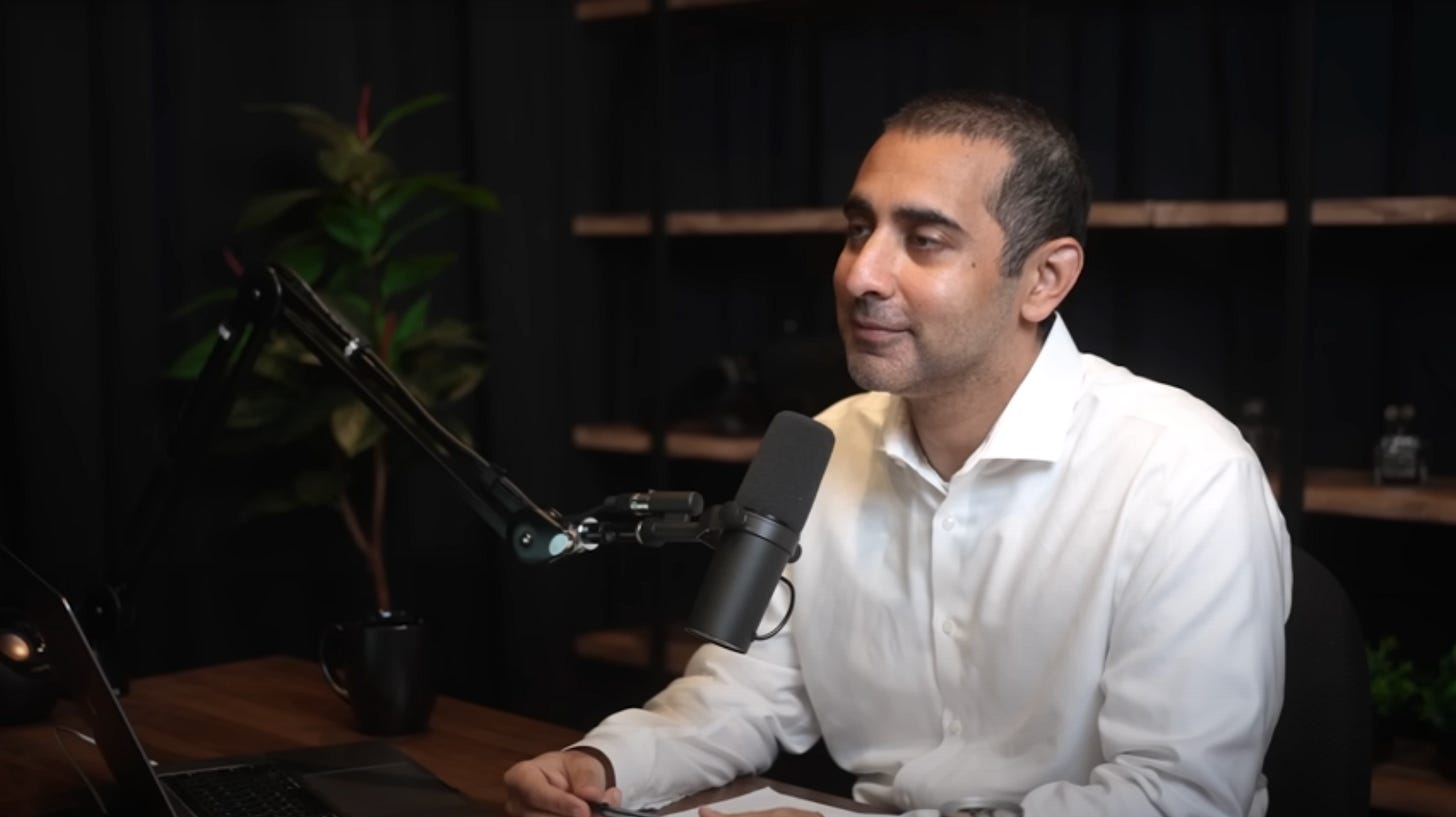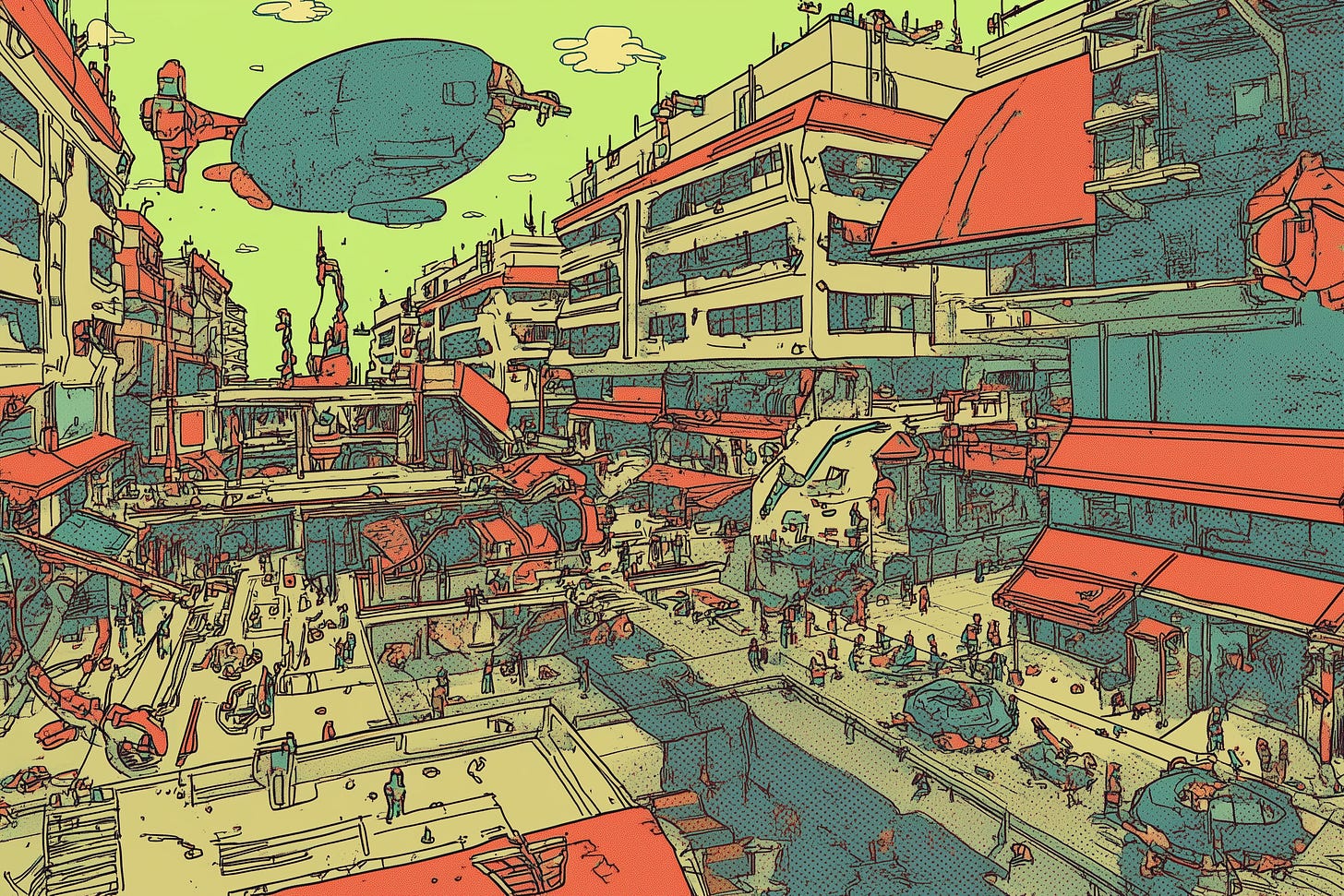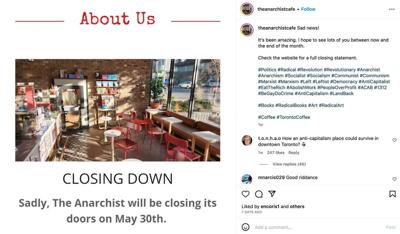How to Value Emerging Network States
Running some numbers behind the socio-techno-capital of human coordination
Let’s begin with a reminder definition for what a Network State is:
A network state is a social network with a moral innovation, a sense of national consciousness, a recognized founder, a capacity for collective action, an in-person level of civility, an integrated cryptocurrency, a consensual government limited by a social smart contract, an archipelago of crowdfunded physical territories, a virtual capital, and an on-chain census that proves a large enough population, income, and real estate footprint to attain a measure of diplomatic recognition.
Resource Allocation & Peaceful Exit
Is it possible to eventually achieve some form of network nationalism? Having one’s sense of pride, identity, and roots tied to the network? Someone who would live by the network, and die by the network? While I’m not going to deep dive here into sacrificial poli-socio-cultural factors that make a network, group, land, or place defensible, this post is instead a broader attempt at quantifying the qualitative.
That is, I’m going against every human bone in my body by shifting the focus from the qualia of human elements that comprise our values: a felt sense of safety, community, belonging, connectedness, sacrifice (taxes, collective action, labour), and shared purpose, to instead focus on more left-brained valuations and metrics that might help define the “success” of an emerging network state.
While I admit this feels like a very VC-esque way of looking at network states, I also believe that the most peaceful resistance requires a parallel revolution that at the very least, in a small way, plays by the old rules and beats the old system at its own game. Meaning, money as fiat resource allocation must necessarily be a practical constraint worth taking seriously.
Otherwise, building parallel institutions with cryptography and community while attempting to bootstrap internet-first institutions without real funding or resource allocation can be disorganized, not taken seriously, and is more likely to fail (under its own weight, or get squashed by existing institutions that do have money and power, playing by the rules of existing system they were built upon).
For any kind of reform, really there are three options: Accept it, change it, or leave it. I argue if we don’t want to accept things for what they are, we must necessarily be able to change them from within, by playing at least some the rules of the existing system, eventually building a provable path to leave the system (exit) by carving optionality when there otherwise was none present.
Take the Anarchist Cafe on Toronto, Canada for example. The business’s presence was a direct protest to capitalism. It offered a haven for pretty much anyone (except police and military, calling them professional “class traitors”), and offered a “pay what you want” model, which, while aligned with anarchist principles, doesn’t quite fare well for running a profitable (even sustainable) business in downtown Toronto.
I use this business as an example of failed revolt. Not to bash anarchism completely and dismiss the ideology, but to note that a successful “proof of concept” must be able to at least survive the existing system. This helps to carve an alternative political path of resistance as an act of reform, towards replacing the current system with a proposed new one. This is recognizing of course how difficult it is to build something that is completely anti-capitalist within an existing capitalist framework (who would want to pay $10 for a latte when you can pay whatever you want? Why would I afford that when I have other bills to pay to survive in the existing system?)
But that is exactly my point. We must necessarily leverage existing systems to bootstrap parallel systems. Otherwise without radical reform (think: violence, insurrection, resource extraction, stealing, or other means), the prospect is doomed to fail. The current systems just won’t have that! And my belief is that network societies and states must follow the path of peaceful exit as much as possible.
The theories of Pluralism and Conflict Theory look at historical events as outcomes of a power struggle between competing interest groups. Through this lens, revolutions happen when multiple groups within an existing political system fail at conflict resolution, through their normal decision-making processes.
The decline of America and the rise of China, the changing world order more broadly, is likely going to be met with enough turmoil, displacement, currency collapse, poverty, violence, and radical displacement of existing institutions in power. The last thing we want to do is build parallel institutions that further advocate for violent means of exit and add to the chaos. Emerging network states to me, are a non-violent path for alternative exit.
I’m going to quote the Bible of all things here and reframe a commonly misquoted verse. It is not that money is the root of all evil, but the love of money that is the root of all evil. We can use the tool of money for positive reform and resource allocation, and attempt to break institutional and political corruption through the emergence of network states and societies, especially as they are built transparently and on-chain. Hence, the importance of valuations and the raison d'etre of this piece.
The Revolution Will Be Tokenized
In the vein of Gandhi, my bias is that non-violent revolution is certainly possible, especially in the era of cryptography. Gandhi’s playbook was moral power plus operational simplicity. Non-cooperation, transparency, local production, and disciplined presence were not abstractions, they were repeatable behaviors that scaled his movement of peaceful protest without reciprocal bloodshed. In a cryptographic era, those same principles can be turned into measurable practices.
Truth and transparency become a public ledger and a visible charter. If rules live in daylight, you lower the temptation to game them, hence minimizing the risk of corruption tainting on-chain reformation movements.
Non-cooperation with misaligned values allow for selective integration. You plug into legacy systems where it reduces friction and where legacy values align with network values, and you route around them where it protects dignity and agency. Depending on the values of the network, this might mean for example choosing to partner with existing military forces, or choosing the path of peace.
Swadeshi, or local self-reliance, becomes a design target for import replacement and a rising local multiplier. The more your daily needs are met within walking distance, the more resilient the local network polity gets. One such example is some grass-roots projects within Network School that are experimenting with the idea of localizing some food and energy needs on-site, via gardening and trialing small solar farms.
Discipline and civility in person become proximate presence and low coordination tax. When people are truly nearby and processes are light, the culture stays kind and productive (more on that below).
These are virtues, but they can also be operator metrics. If we want non-violent exit to compound, we owe it to ourselves to quantify the parts that predict durability. That is how you earn allies, capital, and room to build.

Evaluating Cloud → Land:
Community Pilots as Seed Deals
I hope I’ve made my case for the importance of money and leveraging existing systems to peacefully build exit towards new systems. Now, how can we value the success or failure of emerging network state experiments?
One of the conclusions of my recent blog post uncovering lessons from Network State experiments that made it to land between 2023-25, was to treat network‑societies like startups. I argue that the early failure modes are culture and unit economics of density, not ‘lack of tech’. Below is a 7-metric sheet (DLTV, CAC‑C, DPP, GSA, Entropy Tax, LM, RI) one could use when assessing the feasibility of a network state experiment, to see if it actually has a shot at compounding into a sustainable campus or city:
Density LTV (Density Lifetime-Value):
LTV of a member in a specific geographic cluster, not globally. Look for annual revenue per user (ARPU) uplift once members co-locate (coworking, housing, events, shared services). If DLTV ≤ global LTV, the “move to land” likely isn’t working, and there's no real "upgrade" in quality of life for the network participant. Lifetime value can be defined as the expected duration of stay for the individual, within the geographic cluster.
For example, relocating a startup founder from India to a special economic zone like Johor-Singapore Special Economic Zone (JSSEZ), might help increase the founder’s ARPU by working out of a different location, due to the added benefits of relocation (currency, experience, passport, connections, and other forms of geo-arbitrage).
Acquisition Cost to Co-location (CAC-C):
All-in cost to recruit and physically land a member (visa help, housing guarantees, relocation grants, medical and health facility costs that might attract productive members of a network society). Great pilots could have, for example, CAC-C ≤ 9 months of DLTV (depending on the age of the project and initial investment). Scale and time would eventually bring CAC-C down as recruitment and facilities get streamlined and established.
For example, landing a crypto engineer from Saudi Arabia to an emerging network state community site could cost ~$8,000 - $9,500 USD all-in: visa support and legal $1,200, one-way flight $900, two months of temporary housing $2,400, relocation stipend $2,000, onboarding and training $500, recruiter and admin time $1,000, and a basic local clinic membership $600. If the colocated DLTV is roughly $1,400 USD per month, that CAC-C equals about 6 to 7 months of DLTV, which meets the “≤ 9 months of DLTV” bar for an early pilot.
Daily Proximate Presence (DPP):
The % of members within, say, a 15-minute walk on a given day. DPP is the “active users” of a given geographic proximity. Above 35%1 is where serendipity might begin to feel inevitable. This could be measured by badge/wi-fi check-ins, event scanning, or other opt-in, non-invasive measurements. The physical flow of people can significantly impact cultural transmission density and in-group cohesion.
Governance Surface Area (GSA):
Number of rules/DAOs/committees, say per 100 members. Too low → chaos; too high → bureaucratic drag. Target: minimal charter + fast dispute paths; increase GSA only with scale and keep the ratio steady (no hard or fast rules, and how we define "rules" is important). Informal rules and cultural norms don't count, only rules with decision rights or enforcement.
In the early stages of growth, formalizing these rules are tricky as so much is done through group chats, informal cultural exchange, and through the emergence of interdependence and trust between group members. Additionally, its likely that a lot of existing laws, rules, statures will be imported from the geographic area of its inhabitants (say, the country’s jurisdiction that rules over a given special economic zone). As time goes on though and the community scales, there is a ripe period of time where formalizing rules and dispute arbitrations starts to make sense. If done too late, this can also spell trouble and affect the perceived reputation and authority of network and community governance.
Entropy Tax:
Measured as the weekly “coordination hours” per member. Good org design keeps the entropy tax as low as feasibly possible, while still delivering quality output. Having local measurements within teams/groups helps to see where efficiency gains can be made, and where things are working well. The baseline for this number might look differently depending on the composition, size, and objectives of specific teams and organizations.
Local Multiplier (LM):
For every 1 imported member, how many locals are hired/served? For example, LM > 1.5 predicts political durability with host jurisdictions. If cultural assimilation is more important within a given jurisdiction, say, for example in rural Japan, then perhaps there should be a greater sensitivity to this metric. Longer-term and towards peace, working towards cultural integration between host culture and emerging network enclave culture is important.
Replaceability Index (RI):
Also known as the "bus number". With any startup, this is a natural risk with a small and fragile team. If the core team vanished for 30 days, what breaks? Low RI (i.e., high replaceability) means the culture and systems, not just key personalities, can carry the load and scale the mission. It's likely that the RI is to some extent limited by Dunbar's number, which is especially important when "company" and "community" become synonymous and are scaling in their early stages.
Investor Takeaway
Back teams showing rising DLTV, falling CAC‑C (cohort‑over‑cohort), a DPP flywheel (≥35% most days, higher on programmed peaks), and a stable Entropy Tax. Guardrails: GSA grows sub-linearly with headcount, LM ≥ 1.5 by month 12, and RI ≥ 30 days of core‑team absence. These are some examples of place‑based analogs of product-market fit and efficient growth. In other words, the difference between a vibes‑heavy meetup, and a viable and sustainable community.
PS: You can reach out if you are a VC or investor and have an interest, or are exploring an investment fund looking into early stage network state experiments. I might be able to offer some support.
Money as Non-violent Leverage
Non-violence does not mean naïveté. In plural, contested systems, resource allocation is how peaceful actors defend space to operate. You cannot coordinate housing, visas, clinics, schools, or dispute resolution by yapping in Telegram groups alone. You need a pricing function for density and a way to prove that co-location improves the lives of participants and neighbors.
So here is the translation layer from principle to practice:
Presence with purpose maps to Daily Proximate Presence. If people are close most days, serendipity stops being luck and starts being a utility.
Truthful charters map to Governance Surface Area. Keep the rulebook small, legible, and evolving sub-linearly with headcount.
Local self-reliance maps to the Local Multiplier. If each imported member creates more local work than they consume, politics bends in your favor and the community experiment starts to feel positive-sum for more people.
Discipline in coordination maps to the Entropy Tax. Fewer hours on process, more on production, means culture that lasts and can scale.
Resilience without idols maps to the Replaceability Index. If you function when the founders vanish for a month, you are building a society, not a personality cult.
Dignity in daily life maps to Density LTV. If co-location does not improve lifetime value for members, then “on land” is just a more expensive chat room.
Peaceful scaling maps to CAC to Co-location trending down by cohort. You are not buying friends, you are standardizing a welcome that soon sells itself.
With this framing in place, we can score cloud-to-land pilots like seed deals. Not to financialize the soul of a community, but to protect it with numbers that outsiders respect, towards international legitimacy and diplomatic recognition.
Support the Blog:
My first Product release: Decentralized Social Media 101: A Creator Flywheel. I’ve made a step-by-step guide with everything you need to set up and interoperate Farcaster, Paragraph, and Zora in one sitting.
Own Parallel Citizen’s creator coin on Zora, or support on Paragraph. You can get my product for free if you own my creator coins! (see product page for details)
You can also collect this post as a Zora NFT token here
Sponsors:
(purchasing through these links helps support the blog)
Trezor - Open-source hardware wallets for sovereign custody
Article Summary:
🌐 What Is a Network State? A social network with moral innovation, crypto, governance, land, and census aiming at recognition.
💸 Money as Leverage: Resource allocation is the non-violent defense. Without capital, parallel systems collapse.
🕊️ Peaceful Exit: Accept, change, or leave: network states must carve optionality without violence.
📊 Metrics That Matter: DLTV, CAC-C, DPP, GSA, Entropy Tax, LM, RI → turning community values into investor-grade signals.
🪙 The Revolution Tokenized: Transparent, measurable, and capital-ready, building legitimacy through numbers outsiders respect.
If a fraction p of members are inside a 15‑minute walk on a given day, the expected number of possible pairwise encounters scales with p². Moving from 25%→35% almost doubles potential pairs (0.35² / 0.25² ≈ 1.96).









Being able to determine the lifetime value of a migrant to a place is something that fascinates me endlessly. I wrote a post in which I did a deep dive into the value someone brings to a city: https://open.substack.com/pub/homeabroadhq/p/impact-of-migration and remain interested in the alternative formulas out there!
Perhaps the more pertinent question is whether a network state can truly prove its legitimacy without playing by those rules. Or does a 'peaceful exit' simply mean that we're stuck in the same old game with a more attractive interface?